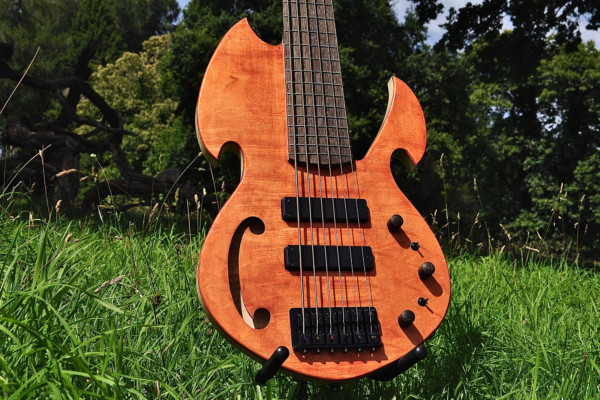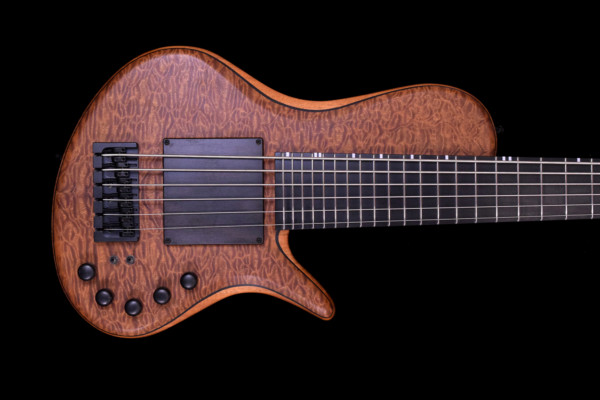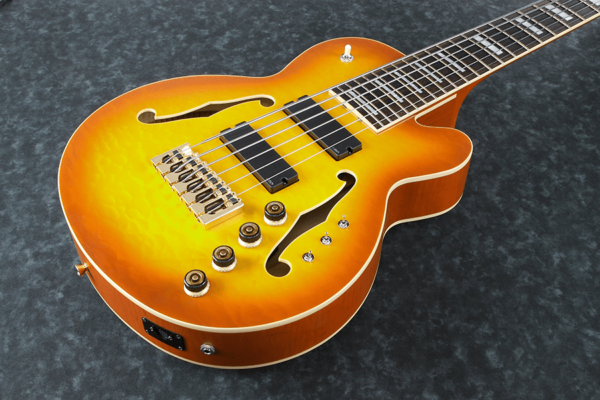Making the Shift: from 4- to 6-String Bass
Q: Do you have any advice for those looking to make the leap from a 4 string to a 6 string bass?
A: I made the leap directly from a 4 to a 6 string bass, and had the advantage of making the switch while I was attending music school, at Berklee. This is an advantage because you are 1) playing a lot and 2) reading a lot.
Simple, but that’s the best advice: 1) practice on the new bass, a lot, and 2) read a lot of music.
Reading music serves a musicians in so many ways. Not least of which is learning your fretboard.
Here are some books I like for reading:
- Bach Cello Suites
- Slama “66 études in all Major and minor keys for bass”
- Storch-Hrabe “57 Studies in Two Volumes for String Bass”
- J. Hrabe “86 Etudes for String Bass”
Having to hunt and peck on the fretboard while working a specific piece of music is one of the best ways I’ve found to get better acquainted with the fretboard. You can try to keep yourself in one position or another to specifically target a chunk of fretboard.
Some recommended steps:
- Re-learn all of your scales and arpeggios, chord shapes, and so on, utilizing the extended range of your new bass
- Practice playing tunes you already know on the instrument (utilizing the extended range)
- Practice tunes out of the Real Book and work out chord shapes
- Practice soloing (to let the stream of ideas take over and work on the instrument in a less conscious but, equally “present” he’d space)
- Read, read, read
Really, it’s all about muscle-memory and automatic recall of information. As a result, you really just need to play it a lot. I personally gave myself a few weeks of study on the bass before using it on a gig. I wouldn’t wait until you’ve “got it” entirely, but you don’t want to blow a performance because you can’t remember what string your on all night long.
Get fairly comfortable with it and then start easing it into use as a primary instrument for a while to really get acquainted with it. You’ll be playing both your 4 and 6 string better than ever in no time.
As a point of reference, it took me two weeks to get fairly comfortable and two months to feel at home on the instrument.
As they say, your mileage may vary. Good luck!
Have a question for Damian Erskine? Send it to [email protected]. Check out Damian’s instructional books, Right Hand Drive and The Improviser’s Path.




Yes!! Thank you so much! I was having some trouble with this! And I figured out some of what you have written here!! This makes it Official for me!!! :^D
Try this as an idea, a little out there but worked for me. Imagine that the low B and high C are a different color from the E-A -D and G strings, that way in looks like what it is, a standard bass with an extra sting ether side simple.
The really big thing is we are turned in fourths, (unlike the Guitar which has a 3’d in there), this gives us a really cool feature, symmetrical patterns.
bit of a rave but stick with me, this could save you a lot of time. I call this “stepping through the looking glass”. Start on your A string and play, has to be three note per string, the first 6 notes of a phrygian mode on the A and D strings.
Make the E note on the A string your start point, now run up to the G string and down to the E string, you will notice the the pattern is starting to take a symmetrical from. Now add the B and C string.
Hope your still there, this is good lol, you have now built an F lydian rooted on the B string. For this system the lydian is what I call the pivot point, in fact the middle of the lydian shape is the pivot point, the shape is rotated 180 degree half way. The B -E-A pattern rotates to make the D-G-C,sorry it will become clear soon.
Now move down the scale and to E Phrygian. Play though the Phygian 3 notes per string.
Okay, no real out standing symmetrical shape within this pattern, but now move it up to build a G mexolydian Rooted on you B string on the 8th fret, notice how the pattern is the same just rotated 180 degrees!. this is really cool!
Just keep building in both directions and you will find the follow…..
Lydian is rotated half way through the pattern
Phrygian rotated makes Mexolydian
Aeolian rotated makes Dorian
Locrian rotated makes Ionian.
oops Sorry guys bit of a rave, bet no one even got to the bottom of the page let along giving my system a go :-)
sandy
Being an autodidactic bassist, I have very little idea what anyone is talking about here beyond major and minor, but I went from 4 to 5 and to 6 very reluctantly because I heard that’s what the “jazzheads” play. Now I wouldn’t be without it. Now I also have many resources that have every scale and mode imaginable and that I try to get to beyond my band practices and roller derby beat-ups. I’m still not a jazzhead nor a metalhead and probably never will be either one, but there is use in every style of music for the extended range. It just takes time, practice and a lot of patience to wrap your fingers around all the extra stuff you now have at your disposal. And it’s about time all the music publishers have caught up with the times and have 6-string instruction available in various forms. If you’re a beginner on the instrument like me, get it and use it! :-) Happy playing!
I’ve been playing 4 string for about 5 years, I started using a 5 string and given little time I knew 1 more string would be too difficult. I now have a 6 string and have no problems with the change. I’m now looking toward the jump to a 7 string.